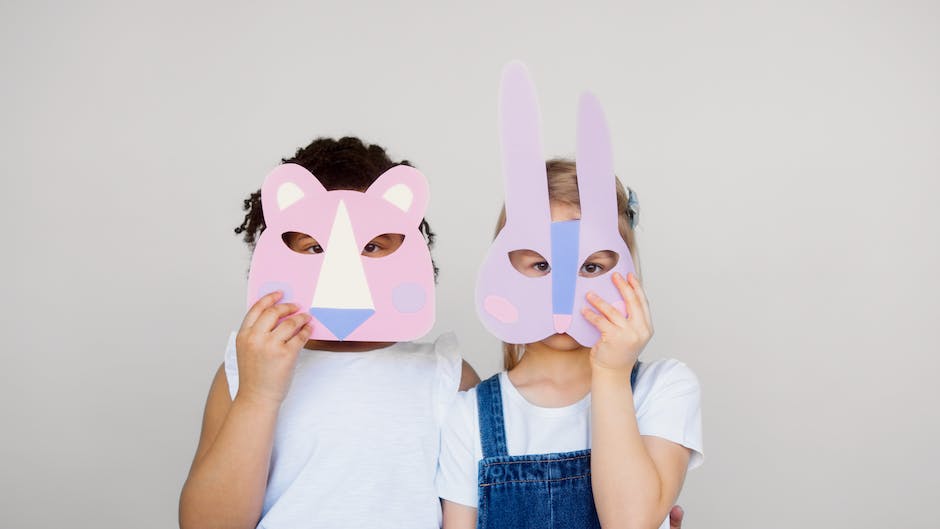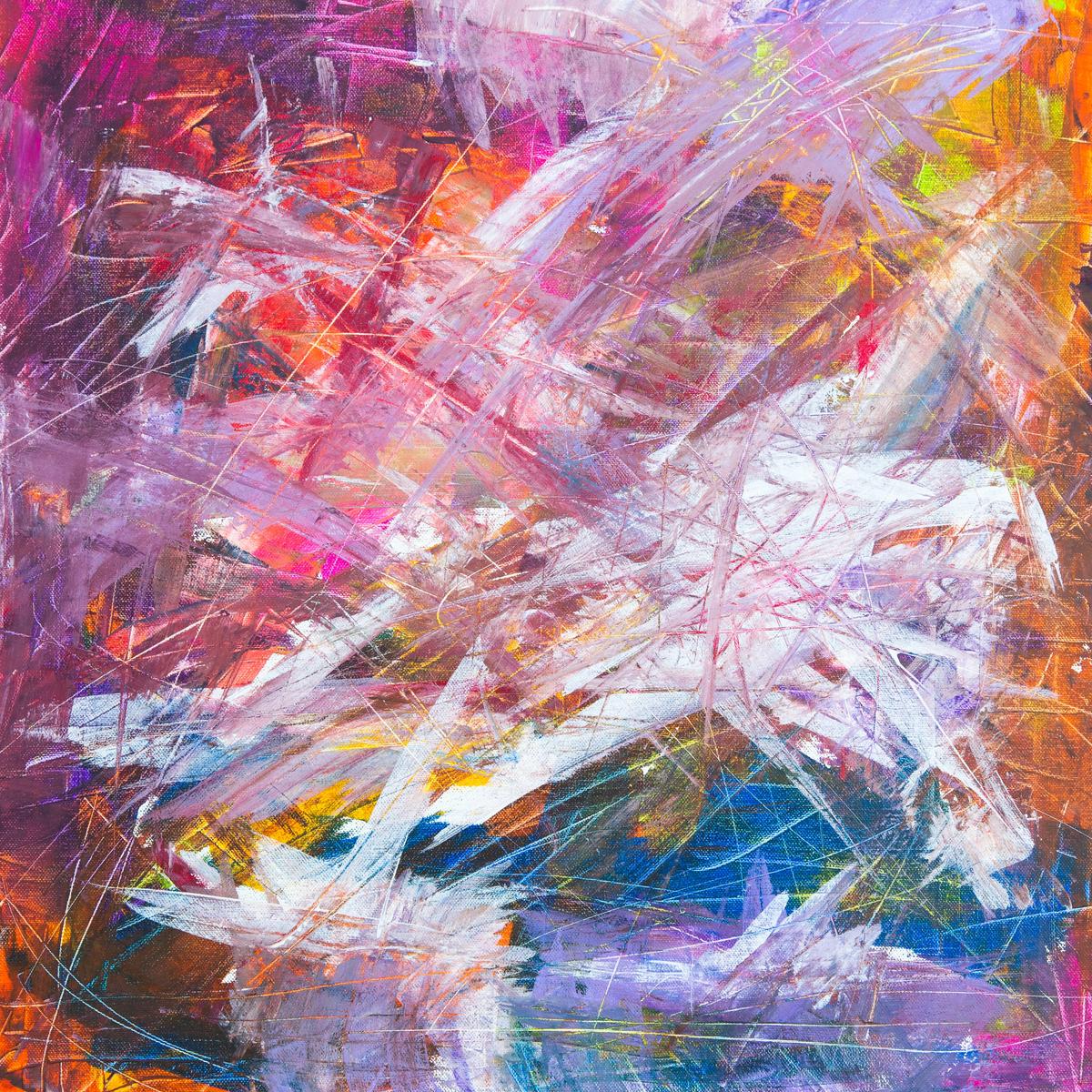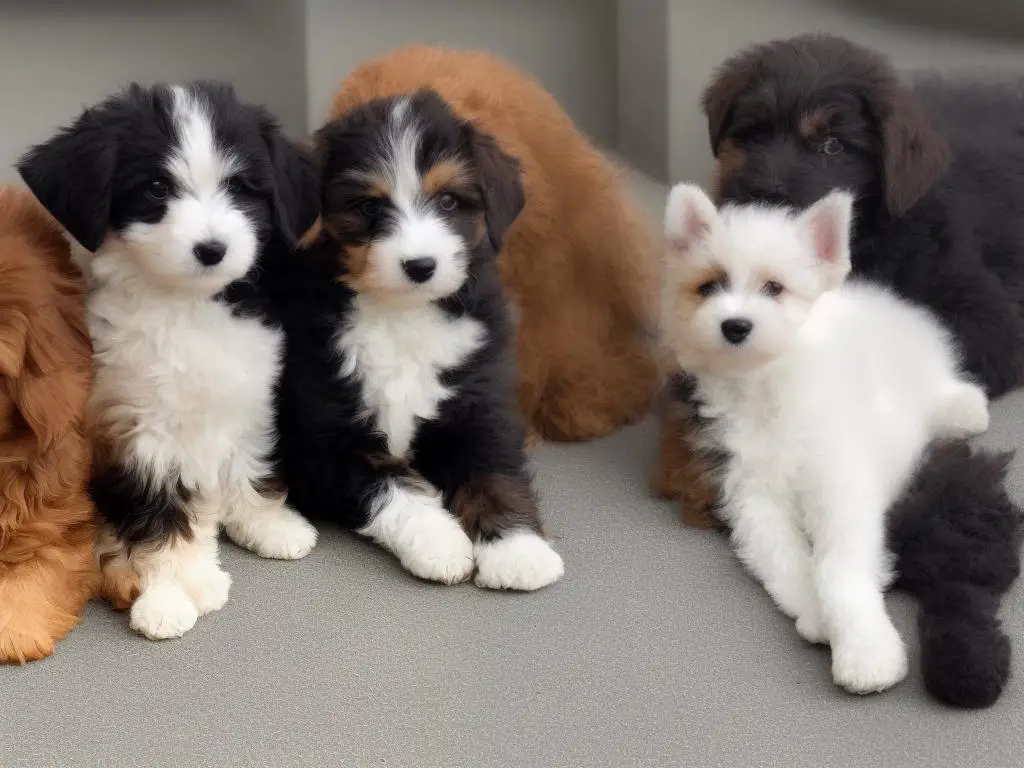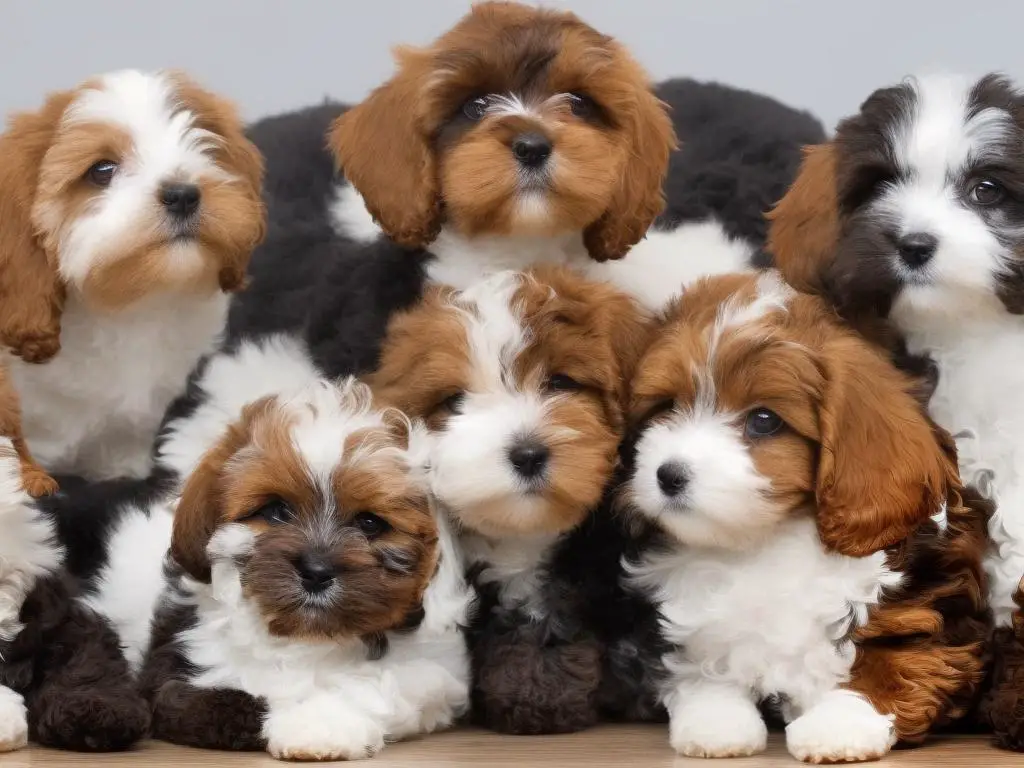Understanding the Colors of Double Doodles
Dive into the Technicolor world of Double Doodles in this comprehensive exploration of the breed’s captivating array of coat colors. Developing an understanding of genetics is the first step in unraveling the colorful mystery of these hybrids born from Golden Retrievers, Labradors, and Poodles. Armed with this knowledge, we delve into the vast and varied palette that makes up the Double Doodle spectrum, from the more commonly seen hues to the rarest of colors. Recognizing the significance of color in a Double Doodle’s health and maintenance requirements is pivotal for the conscientious dog owner. Hence, this discussion also includes an overview of potential health implications linked with certain coat colors and tips to keep your pet’s coat in prime condition.
Understanding the Genetics of Double Doodle Colors
Understanding the Basics of Double Doodle Colors
The double doodle, a hybrid breed of Golden Retriever, Labrador Retriever, and the Poodle, is renowned for its colorful coat that ranges from cream, gold, brown, black to unique multicolored variations. Understanding the color genetics behind these dogs requires delving into the genetics of its parent breeds.
Poodles, one of the parent breeds, exhibit the widest array of colors among dog breeds, which include apricot, black, blue, brown, cream, grey, red, silver, and white. Conversely, Labrador Retrievers have three main coat colors—black, yellow, and chocolate—while Golden Retrievers predominantly come in varying shades of gold. Furthermore, Labrador and Golden Retrievers stand in stark contrast with Poodles due to their lack of color variety, not because they lack genetic complexity, but because of breed standards.
Dominant and Recessive Genes in Double Doodles
The coat color of the Double Doodle offspring is the product of the complex interplay between dominant and recessive genes passed down by its parents. In simple terms, a dominant gene is one that overpowers its partner gene, while a recessive gene remains dormant unless its partner gene is also recessive.
Think of it as a tug of war. If a Labrador Retriever parent with dominant black color genes mates with a Poodle parent carrying recessive red color genes, the dominant black color gene wins the tug-of-war, resulting in a black coat color puppy, barring any other genetic influences.
However, the story gets more convoluted when it comes to dilute genes. A dilute gene changes the appearance of whatever color gene it’s attached to by lightening the pigment. If both parent dogs pass down dilute genes, a black double doodle could become a grey or silver puppy.
Genetic Variations in Double Doodle Colors
The concept of hidden colors further complicates matters. Hidden colors refer to recessive genes that remain unexpressed due to the presence of a dominant gene but can manifest themselves in future litters.
For instance, a chocolate Labrador might carry the hidden colors for black and yellow. If the chocolate Labrador mates with a Poodle carrying black and cream genes, the resulting litter may encompass a vibrant palette of coat colors such as chocolate, black, yellow, or cream.
Moreover, Poodles carry the “Parti gene” that creates white patches on its coat can be carried into the Double Doodle offspring if the gene is present in both parent breeds.
Understanding Double Doodle Colors
The rich visual diversity within the Double Doodle breed is an intriguing glimpse into canine genetics. This unrivaled range of colors and patterns is brought about by selective breeding and accurate genetic matching, sprinkled with a touch of genetic serendipity.
Nevertheless, while color genetics may be complex, it’s important to highlight that appreciation of beauty is indeed subjective and extends far beyond coat color. After all, it’s the captivating and affectionate character of Double Doodles that truly sets them apart.

Common and Rare Double Doodle Colors
Exploring Frequent Double Doodle Colors
Black is often the most commonly seen color in Double Doodles, and it’s not hard to understand why considering its pleasing aesthetic. Black Double Doodles showcase a lustrous, dense coat that stands out, especially when well-cared for. Given that one of their parent breeds, the Labrador Retriever, frequently bears a black coat, this prevalent color in Double Doodles is fairly unsurprising.
Next in line is the Chocolate or Brown Double Doodle.
The chocolate color ranges from a rich dark brown to a lighter hue. This color, just like black, owes its mainstream prominence to the Labradoodle and Goldendoodle parent breeds that commonly exhibit this color.
Cream or White Double Doodles are equally popular.
The cream color varies from off-white to pale yellow. It is a common result of crossing two light-colored parent dogs. Cream Double Doodles often have a pure and clean look that is highly sought after by many pet owners.
Rare Double Doodle Colors
Moving to the less common Double Doodle colors, we find the Apricot and Red hues. Apricot Double Doodles possess coats that range from a light peach to a deep orange reminiscent of the fruit. Red Double Doodles, on the other hand, feature a darker crimson to rust-colored coat. Though not the rarest, this color isn’t as common as black, chocolate, and cream.
Possibly the rarest of Double Doodle colors is the Blue hue.
Blue Double Doodles are not exactly ‘blue’ as the term might suggest but possess a coat that is a diluted black hue, appearing blueish under certain lighting. They usually get this rare coloring when there is a gene dilution in both its parents.
The Rarity and Demand in The Market
The rarity of a Double Doodle’s color does affect its demand and pricing in the market. Black, chocolate, and cream Double Doodles are widely available due to the predominant color genes of their parents, making these colors less high-priced and more in demand due to their commonality.
On the other hand, Apricot, red, and particularly blue Double Doodles are not as frequently encountered, making them quite rare.
This scarcity often drives their price up, with enthusiasts ready to pay premium prices for these unique colored Double Doodles. Worth noting, however, is that the value and price of a puppy is also influenced by other factors, including pedigree, breeder reputation, and overall health.
Don’t Let Color Sway Your Judgement
While a Double Doodle’s color might make them more popular, it’s essential to remember that their color doesn’t influence their personality or temperament. Factors such as genetics from their parent breeds, upbringing, and training have a significant impact on these traits. Double Doodles, irrespective of their coat color, are generally intelligent, friendly, and exceedingly loyal pets.

Photo by markusspiske on Unsplash
Health Implications Related to Double Doodle Colors
Embracing the Colors of Double Doodles
Double Doodle puppies, a breed that combines Labradoodles (a Labrador Retriever and Poodle mixture) and Goldendoodles (a Golden Retriever and Poodle combination), can present a broad range of colors. Their fur can be anything from black, white, brown to cream and gold, mirroring the diversity from their Labrador Retriever, Golden Retriever, and Poodle parent breeds.
Genetic Influence on Double Doodle Colors
Understanding the role of genetics in determining the coat color in Double Doodles requires a basic knowledge of how genes work. Typically, each puppy inherits two copies of a gene, one from each parent. These genes include both color and color-modifying genes. If the same color gene is inherited from both parents, the dog’s coat color will reflect that. However, if different color genes are inherited, the dominant gene will determine the coat color.
Health Implications Related to Double Doodle Colors
While the color of a Double Doodle’s coat is largely cosmetic, certain colors may also be linked to specific health conditions. For instance, dogs with white or very light-colored coats are often more susceptible to sunburn and consequent skin cancer. As Double Doodles can inherit white or cream-colored coats from their Poodle ancestors, it is crucial to take additional precautions when these dogs are exposed to the sun.
On the other hand, black and brown Double Doodles require more grooming than lighter-colored ones, as their darker fur holds heat and can lead to dog heat stroke if not managed properly. Additionally, darker coat colors can sometimes be linked to a higher likelihood of developing certain skin infections.
Moreover, Labradoodles and Goldendoodles, which contribute to the Double Doodle breed, have both been found to be prone to Progressive Retinal Atrophy (PRA). PRA is a group of degenerative eye disorders that eventually lead to blindness. There is possible evidence to suggest that this disorder is more common in certain color patterns, particularly those with darker coats, although more research is needed to confirm such a connection.
General Health Considerations for Double Doodles
Considering the health of your Double Doodle, one must acknowledge that factors like genetics, environment, and care, play a significant role. Despite the potential link between certain health issues with specific Double Doodle colors, it’s crucial to understand that each dog is distinct and uniquely individual. Regardless of their color, owners must prioritize their pet’s overall care. This includes regular veterinary check-ups, a balanced diet, and consistent exercise, which contribute considerably to maintaining a healthy and active Double Doodle in all color variations.

Care and Maintenance of Double Doodle Coats
The Vibrant Palette of Double Doodle Coats
Delving deeper into the world of Double Doodles, you’ll find their coats are featured in a mix of wavy or curly textures. The range of their coat color encompasses an extensive spectrum, including black, white, cream, and brown, along with assorted combinations of these. It’s worth noting that these colors may undergo transformation or fading through stages of growth, changes in diet, shifting health conditions, or simply aging.
Caring for Different Double Doodle Coat Colors
Despite the color differences, maintaining the coat of a Double Doodle involves a similar process– brushes, baths, and general grooming care. However, some specific care and considerations exist for particular colors.
White Double Doodle Coat
White and cream colored coats can easily show dirt and debris, requiring regular brushing to stay clean. Use a quality dog shampoo that enhances the color without stripping the natural oils. A whitening shampoo, used sparingly, could restore brilliance to a dull, faded coat.
Black Double Doodle Coat
Regular grooming is critical for black coats because they can easily become dull and lose their natural shine. Incorporating omega fatty acids in their diet can help promote shiny and healthy coats.
Brown/Cream Double Doodle Coat
These coats may require special attention as environmental factors like sunlight can cause them to fade over time. Use a color-enhancing shampoo and conditioner to help maintain the rich color of the coat.
Proper Brushing Techniques for All Coat Colors
Brushing your Double Doodle’s coat regularly, regardless of color, aids in removing dead hair, spreading natural oils, and reducing tangles and mats. A slicker brush used in conjunction with a steel comb works well for wavy and curly coats. Short, gentle strokes often work best, and always brush in the direction of hair growth.
Bathing and Other General Care
Following a regular bathing schedule ensures any color of Double Doodle coat remains clean and healthy. Frequency depends on their daily activities and coat type. Over-bathing can strip essential oils leading to a dull, dry coat regardless of color.
A healthy diet will significantly impact your Double Doodle’s overall health and the quality of their coat. Foods rich in omega-3 and omega-6 fatty acids can help keep their coats shiny and healthy.
Make sure to also pay attention to their paws, eyes, and ears during grooming. Cleaning these areas can help avoid infections.
Proper care and maintenance of your Double Doodle’s coat color involve regular and diligent grooming. The supreme goal is to keep them comfortable, healthy, and looking their best.

Indeed, the vibrant canvas of the Double Doodle’s coat is a tribute to the breed’s diverse genetic heritage. The understanding of how color genetics operate in these beautiful canines provides a fascinating insight into the world of breeding while recognizing the impact of coat color on health and grooming routines assures an optimized standard of care. Each hue, be it common or rare, contributes to the distinctive personality and charm of a Double Doodle, making these dogs an irresistible mix of colorful allure, lovable temperament, and joyful companionship. For everyone involved, from breeder to hobbyist to proud Double Doodle owner, this understanding deepens the appreciation for these dogs’ unique beauty and the distinct pleasure of their company.
